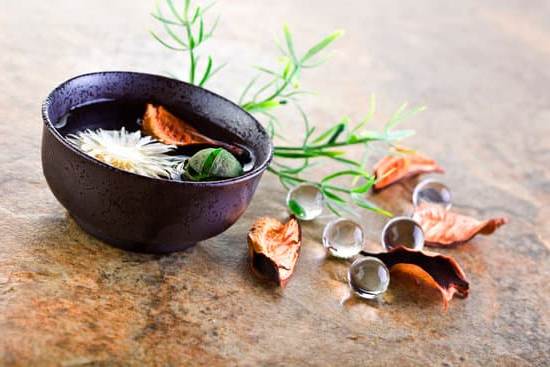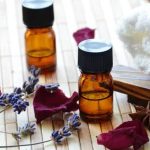Aromatherapy has gained popularity in recent years as a natural and holistic approach to enhancing well-being and promoting relaxation. The use of essential oils, derived from plants, has been touted for its potential benefits on physical, emotional, and mental health. However, amidst the growing interest in aromatherapy, concerns have arisen regarding its safety and potential hazards. This article seeks to delve into the possible risks and adverse reactions associated with aromatherapy.
The practice of aromatherapy involves using essential oils through various methods such as inhalation, topical application, or ingestion. These concentrated plant extracts are believed to interact with the body’s senses and impact physiological functions. While aromatherapy is generally considered safe when used properly, it is crucial to understand the potential dangers that can arise from incorrect usage or specific circumstances.
In this article, we will explore a wide array of topics related to the potential hazards of aromatherapy. From understanding the basics of how aromatherapy works on a scientific level to uncovering allergenic reactions and sensitivities that certain individuals may experience. We will also discuss issues surrounding overuse, misuse, and improper dilution of essential oils which can lead to adverse effects.
Furthermore, we will address how certain medications may interact with essential oils and unveil concerns surrounding contaminants and quality control in aromatherapy products. Finally, we will touch upon best practices for safer use and highlight specific risks for vulnerable populations such as children, pregnant women, and pets.
By providing comprehensive information on the risks associated with aromatherapy alongside its potential benefits, this article aims to empower readers to make informed decisions about their own well-being. It is important to recognize that while aromatherapy can offer numerous advantages when used appropriately under professional guidance; caution should be exercised when incorporating it into one’s wellness routine. Through education and understanding of the potential hazards involved in aromatherapy practice, individuals can harness its therapeutic potentials safely and effectively.
Understanding the Basics of Aromatherapy
Aromatherapy, also known as essential oil therapy, is a holistic healing practice that uses plant extracts to promote physical, mental, and emotional well-being. The use of aromatic compounds derived from various parts of plants, such as flowers, leaves, bark, and roots, is believed to stimulate the limbic system in the brain, which plays a crucial role in emotions, memory, and behavior. Understanding the basics of aromatherapy can help individuals make informed decisions about its usage.
The Science behind Aromatherapy
Aromatherapy works through inhalation or topical application of essential oils. When inhaled, the volatile molecules of these oils enter the body through the nose and interact with the olfactory system. This system consists of olfactory receptors that send signals to the limbic system in response to specific scents. These scents can trigger various physiological responses such as relaxation, stress relief, improved mood, and enhanced focus.
When topically applied to the skin through massage or bath products, essential oils are absorbed into the bloodstream and can exert their effects throughout the body. It is important to note that different essential oils have different chemical compositions and properties. Each oil has specific therapeutic benefits that target different symptoms or conditions.
Common Methods of Application
There are several methods of applying aromatherapy for maximum benefit. Inhalation is one popular method where individuals can inhale essential oils directly from a bottle or use diffusers to disperse them into the air. Steam inhalation by adding a few drops of essential oil to hot water is also effective.
Topical application involves diluting essential oils with carrier oils like coconut or almond oil before applying them to the skin through massages or added into bathwater. This method allows for absorption through the skin and provides localized relief.
Overall, understanding how aromatherapy works is crucial for safe and effective usage. By knowing how different essential oils interact with the body, individuals can make informed decisions about which oils to use and which methods of application are most appropriate for their needs. It is important to note that aromatherapy is not a substitute for medical treatment, and individuals should consult with healthcare professionals before incorporating it into their wellness routine.
The Dark Side of Aromatherapy
Aromatherapy is often touted as a natural and safe way to promote well-being and enhance mental and physical health. However, like any form of therapy, it is not without its risks and potential adverse reactions. In this section, we will explore some of the potential hazards associated with aromatherapy.
Allergic Reactions and Sensitivities: Identifying and Managing Risks
One of the most common risks of aromatherapy is the development of allergic reactions or sensitivities to essential oils. Essential oils are highly concentrated substances extracted from plants that can trigger allergies in some individuals. Symptoms of allergic reactions may range from mild skin irritation to more severe respiratory or systemic reactions.
It is important for users to be aware of their own sensitivity to specific oils and always conduct a patch test before using a new oil. If any signs of an allergic reaction appear, such as redness, swelling, itching, or difficulty breathing, it is crucial to cease use immediately and seek medical attention if necessary.
Pitfalls of Essential Oil Usage: Overuse, Misuse, and Dilution Issues
Another potential risk lies in overusing or misusing essential oils. While these oils have therapeutic benefits when used appropriately, excessive use or improper dilution can lead to adverse effects. Essential oils are highly potent and should always be diluted prior to use on the skin or inhalation.
Failure to do so could result in skin irritation, burns, respiratory distress or even toxic effects. Additionally, using certain essential oils internally without proper guidance from a qualified healthcare professional can pose serious health risks.
Interactions with Medications: Unveiling Potential Complications
It’s important for individuals taking medications to be cautious when using aromatherapy products as there is a potential for interactions between certain essential oils and medications. Some essential oils have been shown to interfere with drug metabolism in the body, leading to altered levels of medications and potentially reducing their efficacy or increasing the risk of side effects.
It is advisable for individuals taking prescription or over-the-counter medications to consult with a healthcare professional before incorporating aromatherapy into their routine to ensure there are no potential interactions that could pose harm.
While aromatherapy can offer numerous benefits, it is crucial to be aware of and respect the potential risks and adverse reactions associated with its use. By following proper safety precautions such as conducting patch tests, diluting essential oils appropriately, and avoiding interactions with medications, users can minimize the likelihood of experiencing any negative effects. In the next section, we will explore the importance of ensuring safe aromatherapy products through quality control measures and identifying potential contaminants.
Allergic Reactions and Sensitivities
Aromatherapy, like any other form of therapy, carries the potential risk of allergic reactions and sensitivities. It is important for individuals to be aware of these risks and take necessary precautions to minimize them. This section will explore how to identify and manage the risks associated with allergic reactions and sensitivities in aromatherapy.
Identifying allergic reactions is crucial in ensuring the safety of aromatherapy users. The symptoms can range from mild to severe and may include skin redness, itching, hives, swelling, difficulty breathing, or even anaphylaxis.
It is essential for individuals to understand their own body’s response to different essential oils by conducting patch tests before using them extensively. A patch test involves applying a small amount of diluted essential oil on a small area of the skin and monitoring for any adverse reactions over a 24-hour period.
In case of an allergic reaction or sensitivity, it is best to discontinue use immediately. Individuals should consult with a healthcare professional if they experience persistent symptoms or severe reactions. Furthermore, it is important to maintain proper record-keeping regarding the types of essential oils used and any adverse reactions experienced. This information can be valuable when seeking medical advice or sharing experiences with others in aromatherapy communities.
To manage risks associated with allergies and sensitivities in aromatherapy, it is crucial to follow certain guidelines. First and foremost, individuals should always use high-quality essential oils from reputable sources to minimize the risk of contamination or adulteration. It is also important to read product labels carefully for specific usage instructions and potential allergens that may be present in the oil.
Additionally, it is recommended to start with low dilutions when using essential oils topically or inhaling them. Gradually increasing the concentration can help gauge how an individual’s body responds and reduce the likelihood of an adverse reaction.
By being aware of potential allergic reactions and sensitivities and taking necessary precautions, individuals can safely enjoy the benefits of aromatherapy. It is important to remember that everyone’s response to essential oils can vary, so it is crucial to listen to one’s body and make informed decisions when using aromatherapy products.
Pitfalls of Essential Oil Usage
When it comes to using essential oils for aromatherapy, it is important to exercise caution and knowledge. While essential oils can offer numerous benefits, there are potential pitfalls that users should be aware of to ensure their safety and well-being.
One common pitfall of essential oil usage is overuse. Essential oils are highly concentrated substances, and using them in excessive amounts can lead to adverse reactions. It is crucial to follow proper dilution guidelines and recommended dosages when using essential oils. Overusing these oils can cause skin irritation, allergic reactions, or other harmful effects on the body.
Misusing essential oils is another risk factor to consider. Some individuals may mistakenly believe that essential oils can be ingested orally, but this is not recommended unless under the supervision of a trained professional. Ingesting certain essential oils can be toxic and cause severe health problems. Additionally, using undiluted essential oils directly on the skin without proper carrier oils or mixing them with incompatible substances can also result in harm.
Dilution issues should also be taken into account when using essential oils for aromatherapy purposes. Most essential oils need to be diluted before applying them topically or using them in a diffuser. Failing to dilute certain highly potent essential oils properly may irritate the skin or respiratory system. It is crucial to educate oneself on appropriate dilution ratios for different types of essential oils and consult reputable sources or professionals if unsure.
To summarize, while essential oil usage offers numerous benefits in aromatherapy, it is important to avoid the pitfalls of overuse, misuse, and improper dilution. Following proper guidelines and recommendations will help ensure that individuals experience the therapeutic benefits of aromatherapy without compromising their health or safety.
- Do not overuse essential oils as they are highly concentrated substances
- Misusing essential oils, such as ingesting them orally or applying undiluted directly on the skin, can be harmful
- Proper dilution of essential oils is crucial to prevent skin irritation or respiratory issues
Interactions with Medications
One aspect of aromatherapy that is important to consider is the potential for interactions with medications. While natural essential oils are often seen as harmless, they contain powerful chemical compounds that can potentially interfere with certain medications. It is crucial for individuals using aromatherapy to be aware of these possible interactions and consult with a healthcare professional if they are taking any medications.
When essential oils are inhaled or applied topically, their chemical constituents can enter the bloodstream and interact with medications in various ways. One common concern is that certain essential oils may enhance or inhibit the effects of certain drugs, leading to unpredictable outcomes. For example, some citrus essential oils contain compounds that can interfere with enzymes responsible for metabolizing certain medications, potentially altering their effectiveness.
Another concern is that certain essential oils may increase the risk of side effects or adverse reactions when used alongside medication. For instance, some oils have blood-thinning properties and could increase the risk of bleeding if used by someone who is already taking anticoagulant medication. Additionally, some essential oils have sedative effects and could potentially enhance the drowsiness caused by certain medications.
To minimize the risks associated with interactions between medications and aromatherapy, it is crucial to communicate openly with healthcare professionals. Before incorporating aromatherapy into a treatment plan, it is advisable to inform doctors or pharmacists about any essential oils being used and any prescribed medications being taken. This will allow healthcare professionals to provide personalized guidance based on an individual’s specific situation and help avoid potential complications.
Contaminants and Quality Control
As with any consumer product, quality control is essential to ensure the safety and efficacy of aromatherapy products. Contaminants in essential oils can pose serious health risks, so it is important for consumers to be aware of the potential hazards and take steps to ensure they are using safe products.
One major concern in aromatherapy is the presence of synthetic additives or adulterants in essential oils. Some unscrupulous manufacturers may dilute their oils with cheaper substances or add synthetic chemicals to enhance fragrance or extend shelf life. These additives can not only reduce the therapeutic properties of the oil but also lead to adverse reactions in sensitive individuals.
To mitigate these risks, it is crucial for consumers to purchase essential oils from reputable sources that adhere to strict quality control measures. Look for companies that provide detailed information about their sourcing and production methods, as well as third-party testing results. This ensures that the oils are pure, unadulterated, and free from contaminants. Additionally, look for certifications such as organic or certified therapeutic grade, which indicate that rigorous standards have been met.
Regularly checking for batch-specific GC-MS (Gas Chromatography-Mass Spectrometry) reports is another important step towards ensuring product quality and purity. These reports provide a breakdown of the chemical components present in an essential oil sample, allowing consumers to verify its authenticity and detect any potential contaminants or adulterations.
| Risk | Precautions |
|---|---|
| Synthetic additives or adulterants | Choose oils from reputable sources that provide information about sourcing and production methods, as well as third-party testing results. Look for certifications such as organic or certified therapeutic grade. |
| Presence of contaminants | Regularly check batch-specific GC-MS reports to verify product authenticity and detect potential contaminants. |
Best Practices for Safer Aromatherapy
When using aromatherapy, it is important to follow best practices to ensure safety and maximize the benefits of essential oils. Here are some guiding principles for users to keep in mind:
- Research and education: Before using any essential oil, it is crucial to do your research and educate yourself about its properties, potential risks, and proper usage. Understand what each oil is commonly used for and familiarize yourself with any contraindications or precautions associated with it.
- Dilution: Essential oils are highly concentrated substances and should never be used undiluted on the skin. To avoid skin irritation or sensitization, always dilute essential oils in a suitable carrier oil or other appropriate medium before applying them topically. The recommended dilution ratio can vary depending on the oil and intended use, so refer to reliable sources or consult a certified aromatherapist for guidance.
- Patch testing: It is advisable to perform a patch test before using an essential oil for the first time or when introducing a new one into your routine. Apply a small amount of diluted oil to a small area of skin (such as the inner forearm) and wait 24-48 hours to observe for any adverse reactions. If redness, itching, swelling, or other signs of irritation occur, discontinue use.
- Proper ventilation: When diffusing essential oils, make sure the room is adequately ventilated to prevent excessive inhalation of volatile compounds that could potentially cause respiratory issues or headaches. Avoid prolonged exposure in enclosed spaces, especially if you or others present have respiratory conditions like asthma.
| Essential Oil | Recommended Dilution Ratio |
|---|---|
| Lavender | 1-2% |
| Tea Tree | 0.5-1% |
| Peppermint | 0.5-1% |
| Eucalyptus | 1-2% |
| Lemon | 2-4% |
These dilution ratios can be adjusted based on personal preferences and specific needs, but it is important to exercise caution and start with lower concentrations if you are new to using essential oils or have sensitive skin.
By following these best practices and utilizing the above information, individuals can enjoy the benefits of aromatherapy while minimizing risks and ensuring a safer experience. Remember to consult with a healthcare professional or an experienced aromatherapist for personalized advice and guidance.
Aromatherapy and Certain Populations
Aromatherapy, the use of essential oils for therapeutic purposes, has gained popularity in recent years. However, it is important to recognize that certain populations may be at greater risk when using aromatherapy, including children, pregnant women, and pets. This section will explore the potential risks associated with aromatherapy for these vulnerable groups.
Children are more sensitive to the effects of essential oils due to their smaller bodies and developing systems. Some essential oils can cause skin irritation or allergic reactions in children, while others may have a sedative effect that could interfere with their normal sleep patterns.
Certain oils also contain chemical compounds that can be toxic if ingested by young children. It is crucial for parents and caregivers to research and consult a healthcare professional before using any essential oils on or around children.
Pregnant women should exercise caution when using aromatherapy as well. Some essential oils have been linked with hormonal imbalances and possible complications during pregnancy. For example, some studies suggest that high levels of certain essential oil constituents can potentially induce contractions or affect fetal development. It is best for pregnant women to consult with a qualified healthcare provider before using any aromatherapy products.
Pets, particularly cats and dogs, are also susceptible to the adverse effects of certain essential oils. Cats lack an enzyme necessary to metabolize certain compounds found in essential oils, which can lead to toxic buildup in their systems. Dogs have a stronger sense of smell than humans and may find certain scents overwhelming or even distressing.
Some essential oils can cause gastrointestinal upset or other adverse reactions in pets when ingested or applied topically. Pet owners should avoid using essential oils around their furry companions unless under the guidance of a veterinarian knowledgeable about aromatherapy.
Conclusion
In conclusion, while aromatherapy can offer numerous benefits for both physical and mental wellbeing, it is crucial to consider and understand the potential risks associated with its use. The exploration of the basics of aromatherapy, as well as the identification and management of potential risks such as allergic reactions and sensitivities, overuse or misuse of essential oils, interactions with medications, contaminants, and quality control issues are important in ensuring safe use.
One best practice for safer aromatherapy is to always consult with a qualified aromatherapist or healthcare professional before incorporating any essential oils into your routine. They can provide guidance on proper usage, dilution ratios, and precautions based on individual circumstances. This is especially important for certain populations such as children, pregnant women, and pets who may be more sensitive or at higher risk of adverse reactions.
Ultimately, making informed decisions about aromatherapy involves carefully weighing the potential benefits against the potential risks. It is important to consider individual health conditions, allergies, medications being taken, and other factors that may impact safety. By doing so, individuals can enjoy the benefits of aromatherapy while minimizing any potential harm. Educating oneself about proper usage and safety measures ensures that aromatherapy remains a safe alternative therapy option for enhancing overall wellbeing when used responsibly.
Frequently Asked Questions
What is the danger of aromatherapy?
While aromatherapy is generally considered safe and beneficial when used properly, there are some potential dangers associated with it. One of the main concerns is allergic reactions or sensitivities to certain essential oils. Some individuals may experience skin irritation, respiratory issues, or other adverse reactions when exposed to specific oils.
Furthermore, essential oils are highly concentrated substances, and using them undiluted or ingesting them can be toxic. Overusing certain oils or using them in large quantities can also lead to headaches, dizziness, nausea, or other unpleasant symptoms. It is crucial to use proper dilution ratios and adhere to recommended guidelines to prevent any potential risks.
Who should not use aromatherapy?
Aromatherapy may not be suitable for everyone, so it’s important to consider certain groups who should avoid using it without consultation from a healthcare professional. Pregnant women should exercise caution since some essential oils have been known to induce contractions or hormonal imbalances. Additionally, people with asthma or other respiratory conditions might find that inhaling certain strong scents triggers breathing difficulties or allergic reactions.
Those with sensitive skin should be cautious as well since some essential oils can cause skin irritation or rashes if applied directly without dilution. Finally, young children and infants have delicate systems and may be more susceptible to adverse effects from essential oils; therefore, it’s recommended to consult with a pediatrician before using aromatherapy on them.
Can inhaling essential oils be harmful?
Inhaling essential oils can potentially be harmful if they are used improperly or not diffused correctly. While inhalation is one of the primary methods for enjoying the benefits of aromatherapy, precautions need to be taken into consideration. Undiluted essential oils should never be directly inhaled as they are highly concentrated and can irritate the respiratory system. Instead, they should always be diffused diluted in carrier oils or through a proper aromatherapy diffuser according to manufacturer instructions.
Certain essential oils like eucalyptus or peppermint, which produce powerful scents and contain high levels of specific chemical compounds, may cause respiratory distress or other negative reactions when inhaled in excessive amounts. Additionally, prolonged exposure to strong aromas in confined spaces can lead to headaches, dizziness, or nausea for some individuals. Therefore, it’s important to use essential oils cautiously and be mindful of the recommended diffusion times and ventilation while enjoying their aromatic benefits.

Are you looking for a natural way to improve your health and wellbeing?
If so, aromatherapy may be the answer for you.




